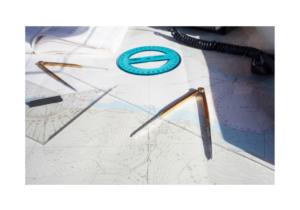Aug 04, 2021How to Structure a Chart of Accounts for an E-Commerce Business
One of the most important tasks to complete when setting up a new business is to create a useful chart of accounts. Having an accurate and comprehensive chart of accounts at the beginning stages of your business goes a long way to ensure your books are organized. Basically, a chart of accounts is a list of categories that distinguishes financial transactions. The main overarching categories are assets, liabilities, and equity. These are further broken down into more specific categories.
Although each business will have accounts for assets, liabilities, and equity, each industry will need to customize its approach to the chart of accounts to ensure it serves the business appropriately.
Can I use the default chart of accounts?
Many accounting softwares offer a default chart of accounts with sub-accounts. As an e-commerce business, you likely won’t need each sub-account. Although using the default template is a great place to start, it pays to invest time upfront to learn what account categories are actually needed. You may find that if you choose to use the default account, you’ll be swimming in a sea of disorganization a few months down the road.
How should I alter the chart of accounts for my ecommerce business?
As an e-commerce business, you’ll have several accounts that a brick-and-mortar store wouldn’t. For example, you’ll need to account for shipping costs or revenue from charging shipping fees to your customer. As an e-commerce business, you’ll want the visibility of knowing exactly how much shipping is costing you or benefitting you.
Another unique account that is useful for e-commerce businesses is a checking account, bank, or payment balance account. This will track the amount of money held by your e-commerce platform, allowing you to gain greater insight into the money held by your platform. You might designate your Shopify account as “Shopify Payment Balance” or something similar. It could be useful to have transaction categories for many of your third party partners.
There are several additional accounts that could be useful in an e-commerce business. Here are just a few:
Revenue
- Sales
- Discounts
- Shipping/Delivery Fees
Current Liability
- Exchange Credit
- Gift Card
Expenses
- E-Commerce Platform Fees
- Website Hosting Fees
- Advertising
- Storage Fees
Assets
- Inventory
Setting up your chart of accounts
Though the initial process might sound daunting, the workload decreases dramatically after you’ve finished the setup. To maintain your books, you’ll need to make sure each bookkeeper is trained in what accounts should be categorized into what category. This will enable you to have a clean and useful chart of accounts for any industry. If you’re looking for assistance in setting up your chart for your e-commerce business or another industry, contact Nimbl for an assessment of your books and current accounting situation. Our team of experts has dealt with e-commerce businesses for years and understands what accounts are most beneficial to a thriving business and clean books. Contact us today!









